Is Your Vote Counted?
Are frequent Dem wins by tiny margins real, or do the machines lie? And other voting issues.
Update - Oct. 27, 2024
Last week, frustrated by the vast number of emails and phone calls to my US phone number from Texas politicians, I called the registrar of voters of the county in which I had lived. I discovered that although I had moved away from Texas in 2011 and have no ties to that state, I was still registered to vote there. Not only that, but my registration had been reconfirmed in January, 2024.
I was told by the registration clerk that I could easily cancel my registration from the website votetexas.gov. This was not true; there was a way to transfer registration between counties in Texas, but no way to cancel completely.
I called the Secretary of State’s office and was referred to the same website. Then I called back to my county. The clerk I spoke to this time (a different woman) offered to step me through the process on my computer. However, the VOIP phone I use to call the USA does not work well in the room with the computer, and I could not read the info on my phone well enough to do the job.
I asked to speak to the supervisor, who emailed me a cancellation form, which I had to sign, scan, and email back to her. I did this.
It is 2024. My voter registration should have been cancelled in 2011. How many other people who no longer live in Texas, or who might not still be alive, are listed on voter rolls which are reaffirmed annually?
Background
Voter fraud has been around for a long time.1 I have been victimized by it three times. Once, when I was in my 20’s and living in a student neighborhood, there was an election about rent control, a ballot measure strongly favored by young renters. The line was longer than for the mid-term election we had had just a few months earlier; in fact, I waited in line for at least a half-hour. We were given a paper ballot and a pencil. I knew the drill: after voting we were to drop the paper into the slot in a big wooden box. However, I noticed that the ballot box slot had been taped shut and the elderly poll workers were piling ballots on a table, cross-hatched: some perpendicular to the edge of the table, while others horizontal. And it was not a one-one arrangement: there were several piled in one direction, then a different number in the other. When election results were announced, my polling place was reported to have had few voters, and they had voted overwhelmingly against rent control.
The second time was a presidential election. I was still a Democrat but lived in a Republican state. When I got to the poll, I was told I had already voted. The poll worker showed me that my name was checked off. I complained at city hall, but was told nothing could be done.
The third time was the 1994 mid-term congressional election. I lived in Boston at the time and my polling place was the lobby of the Jewish Senior Apartments, inhabited at that time mostly by Holocaust survivors and refugees from the Soviet Union. These were overwhelmingly conservative voters.
I am under five feet tall, a height not considered unduly short among Ashkenazi Jewish women at that time. The polling place was dimly lit; I noticed that only one out of every four fluorescent fixtures (the long type with two bulbs) were lit. The old-fashioned voting machines were raised on 2x4 boards—raised 4 inches, not the 2. I was too short to see the labels on the voting machine levers. As many of the people voting here were also short—and many were old with vision problems—I would not have been the only person affected by the way the polling station was set up.
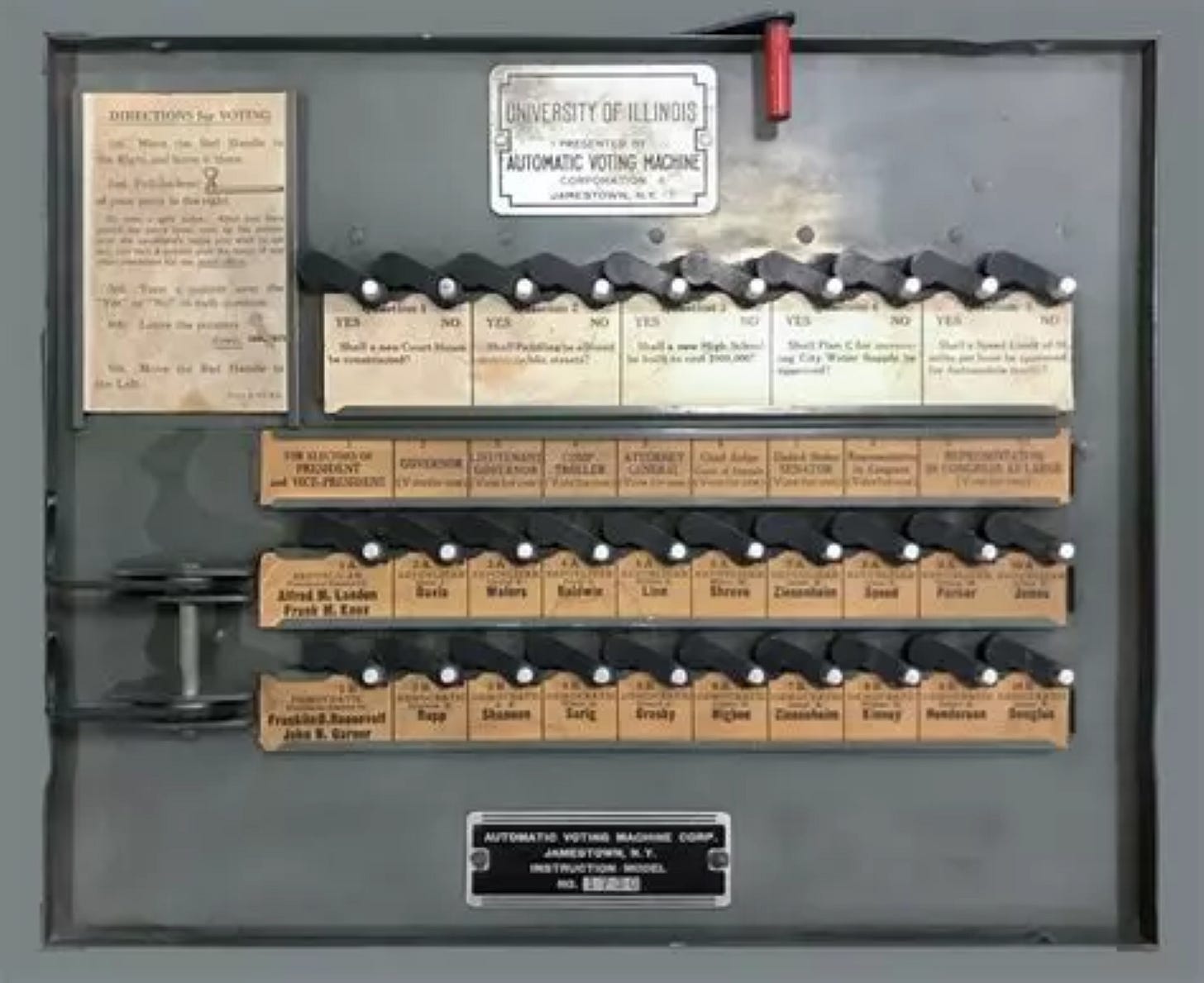
I called out that I could not see well enough to vote. I was told to use the handle to open the curtain and exit the voting booth, and then someone would help me. I forgot that opening the handle counted the vote, so I followed instructions and used it. The same voice that told me to use the handle to exit told me that since I had used the handle, my vote (or non-vote) had been counted. I said, “But you told me to use the handle.” The poll watchers and poll workers told me that they had not heard me say anything. Not surprisingly, my polling place’s results were overwhelmingly Democrat.
I also know that if one wants to return something to Walmart—the largest cheap chain of stores in the USA—one needs a state-issued ID such as a driver’s license or the similar one issued free by the Department of Motor Vehicles to the elderly and other people who do not drive. I asked the Walmart returns clerk if many people came who didn’t have IDs. She said yes, a surprising number drove without their licenses, but they all came back later with the licenses so that they could complete their returns.
Odd Voting Results
A few years ago I noticed that in a surprising (to me) number of contests, the Democrats edged out Republicans by less than 5 percentage points—sometimes as little as a half a point. For example, it happened in 2022 when Ilhan Omar beat her primary opponent by just 2 points. (This year she beat him by 13.3 points after outspending him $6.2 million to $1.4 million).2So many seats being won by Democrats by tiny margins seemed strange to me.
I decided to look at the 2022 mid-term election results. Having been a statistical typist when I was young, I wasn’t daunted by the task of keying in data about the 500-odd Senate and House seats up for grabs in 2022. I used the data posted by Politico in November 2022. Warning: I did not proofread the resulting spreadsheet and I am sure there are a few mistakes, but I am still generally a fast and accurate keyboarder.3
The table for small margins looks only at races where the winning/losing percentages vary from 45.1 to 54.9 percent. If you look at the table for the House of Representatives races with small differences, you will find that Democrats won almost twice as many close races as Republicans. You will also see that the winning percents are remarkably similar, and that the curve is very smooth.
Republican numbers within this range vary considerably more than Democrat numbers. One might think that both parties would show similar patterns, but they do not.
Looking at the table for House members winning by large margins, my assumption that the two parties’ patterns would be similar pans out: the two sets of numbers are remarkably parallel.
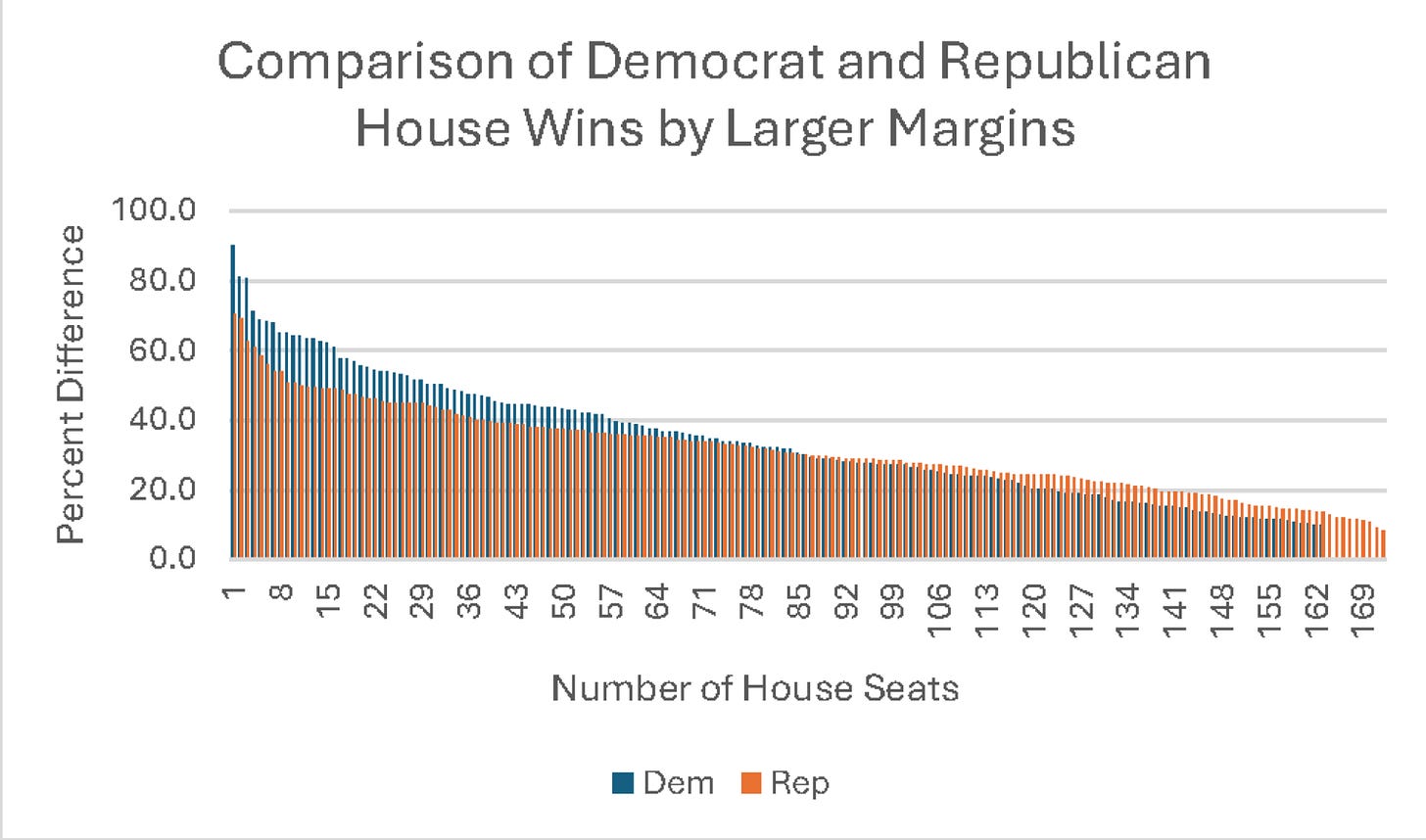
Note that the percentages for a particular race do not necessarily add up to zero as many races had at least one additional candidate.
My data may have some typing errors, differences in scale may make the charts look more different than they really are, and I am not a statistician. Therefore I cannot draw any definitive conclusions.
However, I think that the anomalies shown in these charts are very easily explained by voting machines set to add a few points to any Democrat candidate when the numbers are close. Since there is no way to recount these votes—the machine either shows them or does not—there is no way to verify. If these machines are connected to a network even for a second or two, any such cheat could and would be removed from the program immediately upon the closing of the polls. Manufacturers’ claims of fairness are meaningless because hackers are everywhere. Any group smart, devious and dishonest enough to game an election would be smart, devious, and dishonest enough to apply a cheat before and then make all evidence of it disappear after the election.
Voting in Israel
In Israel, Election Day is a paid holiday. One votes at the address shown on the ID card, even if one has moved away, so sometimes people have to travel several hours to reach their polling place. This requirement, however, encourages people to change their address when they move.
There are many small polling places; since no expensive equipment is used this is easy and not expensive. I vote at a high school that contains several precincts, each voting in a different classroom.
The voter enters the polling place and hands over his or her identity card, which is inspected and passed down the line to poll watchers from each of the (many) political parties, and the voter is given an envelope. Behind a curtain we choose the ticket for our candidate or our candidate’s party (in national elections we vote for parties, not individual candidates) put it in the envelope, and—in front of the row of poll watchers—we put the envelope into the box. Then we are given our ID card back.
Because voting day is a holiday, the poll workers tend to be younger political activists from each party, not retired people. They are not “chosen” from a circle of elderly party loyalists by the city elections clerk.
There are ways to cheat; people are nothing if not inventive. But the elections are much more secure than in the USA.
Conclusion
The results I discovered are troubling as they suggest the possibility of wide-spread fraud. Because of the ease of machine fraud and the difficulty or impossibility of finding it, the USA needs to return to paper ballots that can be counted by real people, with an equal number of poll watchers/ballot counters from each party at each polling place. These ballots can be recounted when the results are within just a few points.
Additional steps that would help insure fair elections include:
At least two people (of different political persuasions) should check off voters as they vote.
From my personal experience I know that voters should have to show a valid ID before registering or voting, and they should be required to vote in the precinct of the address on their ID. Since Walmart requires a valid ID, there is no excuse such as “poor people wouldn’t be able to vote” to deny this.
Only citizens should be allowed to vote.
Each mail-in ballot should have the date and signature verified by people of both major parties. Drop-boxes for ballots should be illegal.4
“Ballot harvesting” should be illegal. Nothing prevents the “harvester” from simply entering his or her candidate of choice instead of the one requested by the person whose vote is being “harvested.”5
“Early voting” should be severely restricted. I took my mother, then in her late 90’s and legally blind, to the polls for early voting in the 2016 election. Voting was supervised by only one person. That person assisted my mother while I waited outside. Who knows if the vote was, in the end, for my mother’s candidate.
With these and a few other steps implemented, voters and candidates alike would have much greater confidence in the results than we now have. With the present system, with its lack of safeguards and dependence on easily rigged computerized machines, fraud is almost assured.
https://fedsoc.org/commentary/publications/voter-fraud-in-our-republic
https://apnews.com/article/minnesota-election-ilhan-omar-e8b62d80a4952efeb1e40d5a857a2b4f
If you are interested in receiving a copy of the spreadsheet, please leave a comment with a way for me to reach you.
https://thefederalist.com/2024/08/29/this-is-fraud-ohio-investigators-looking-into-suspect-voter-registrations-tied-to-left-wing-firm/
https://www.heritage.org/election-integrity/commentary/vote-harvesting-recipe-coercion-and-election-fraud



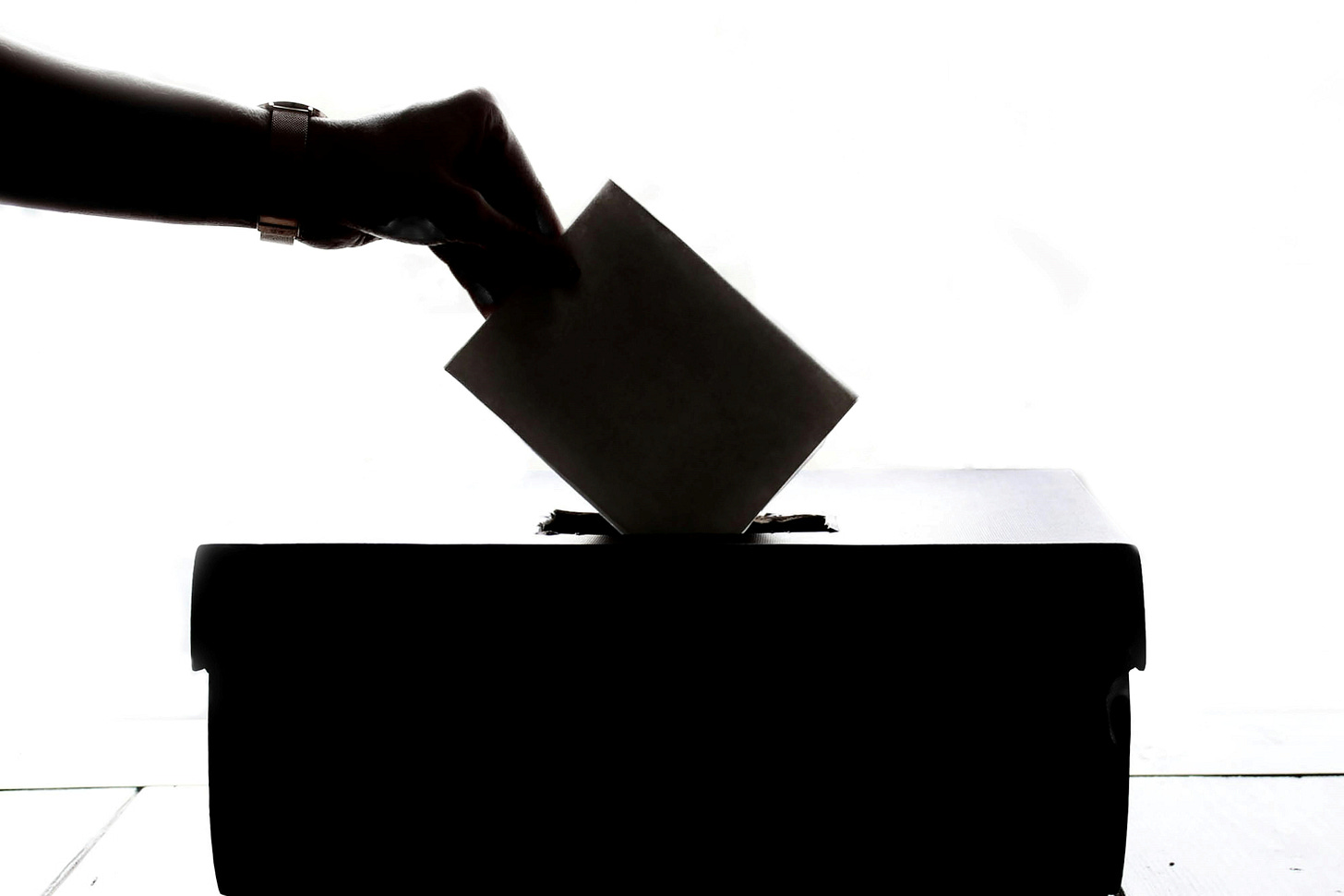
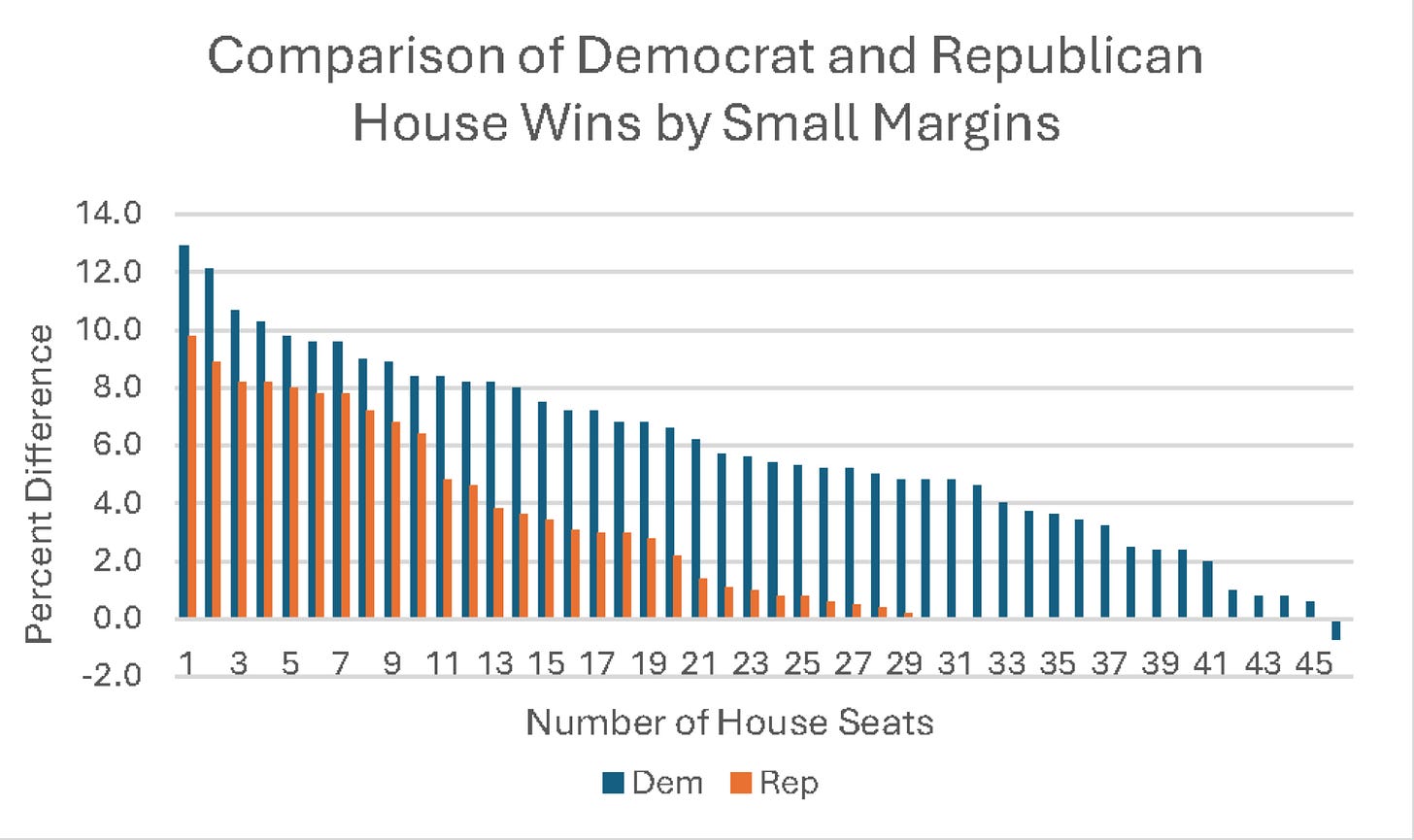
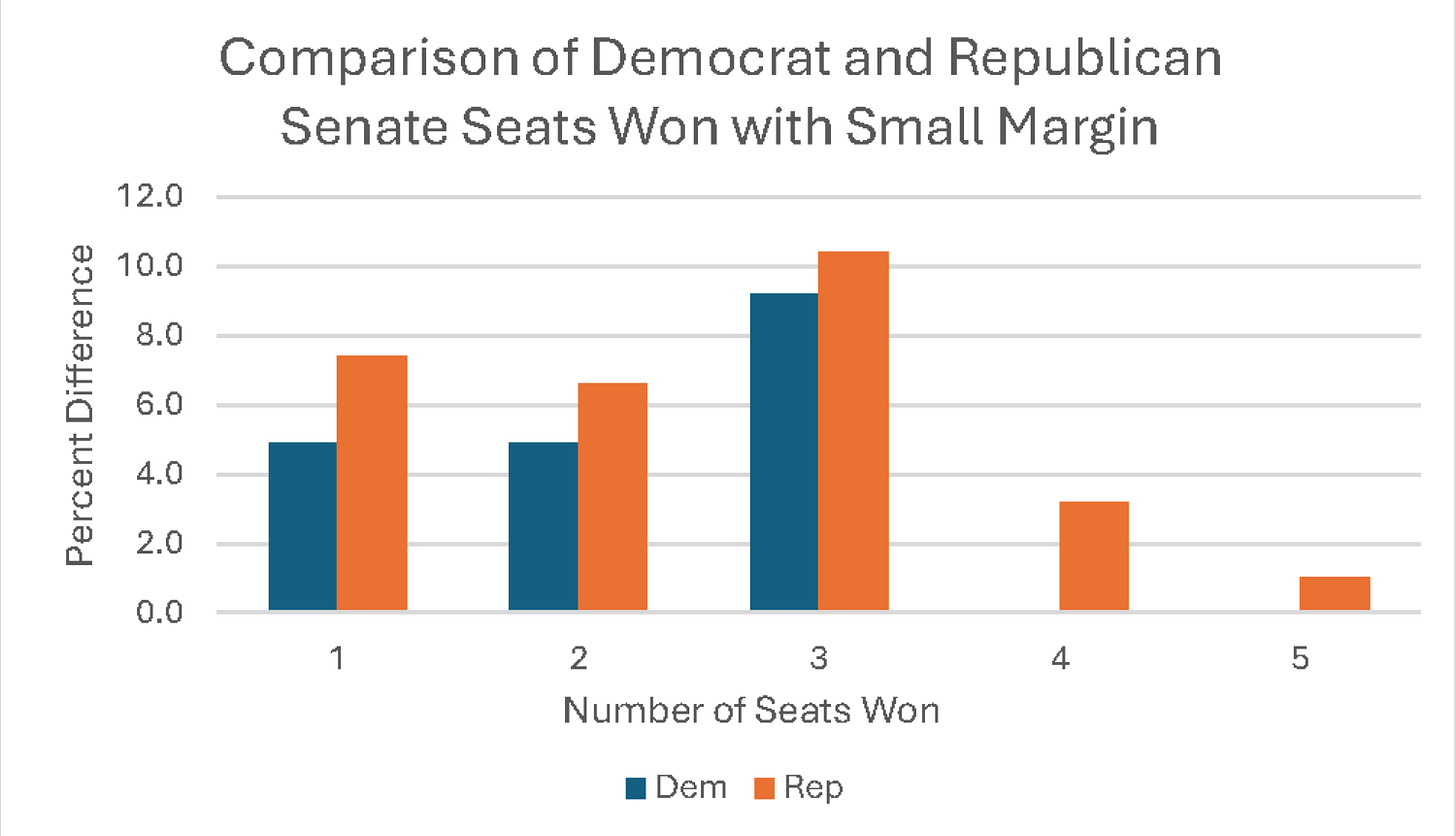
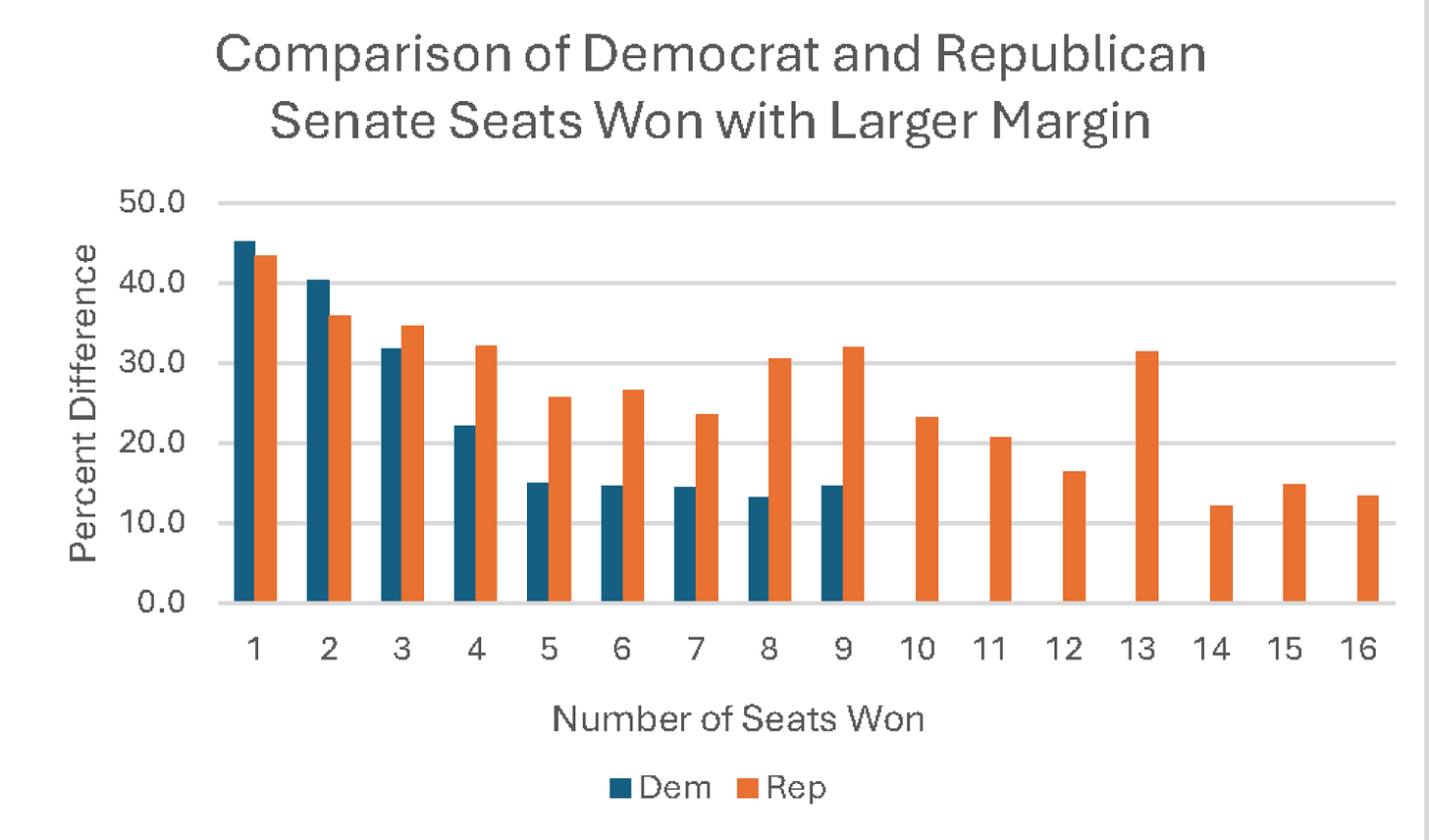

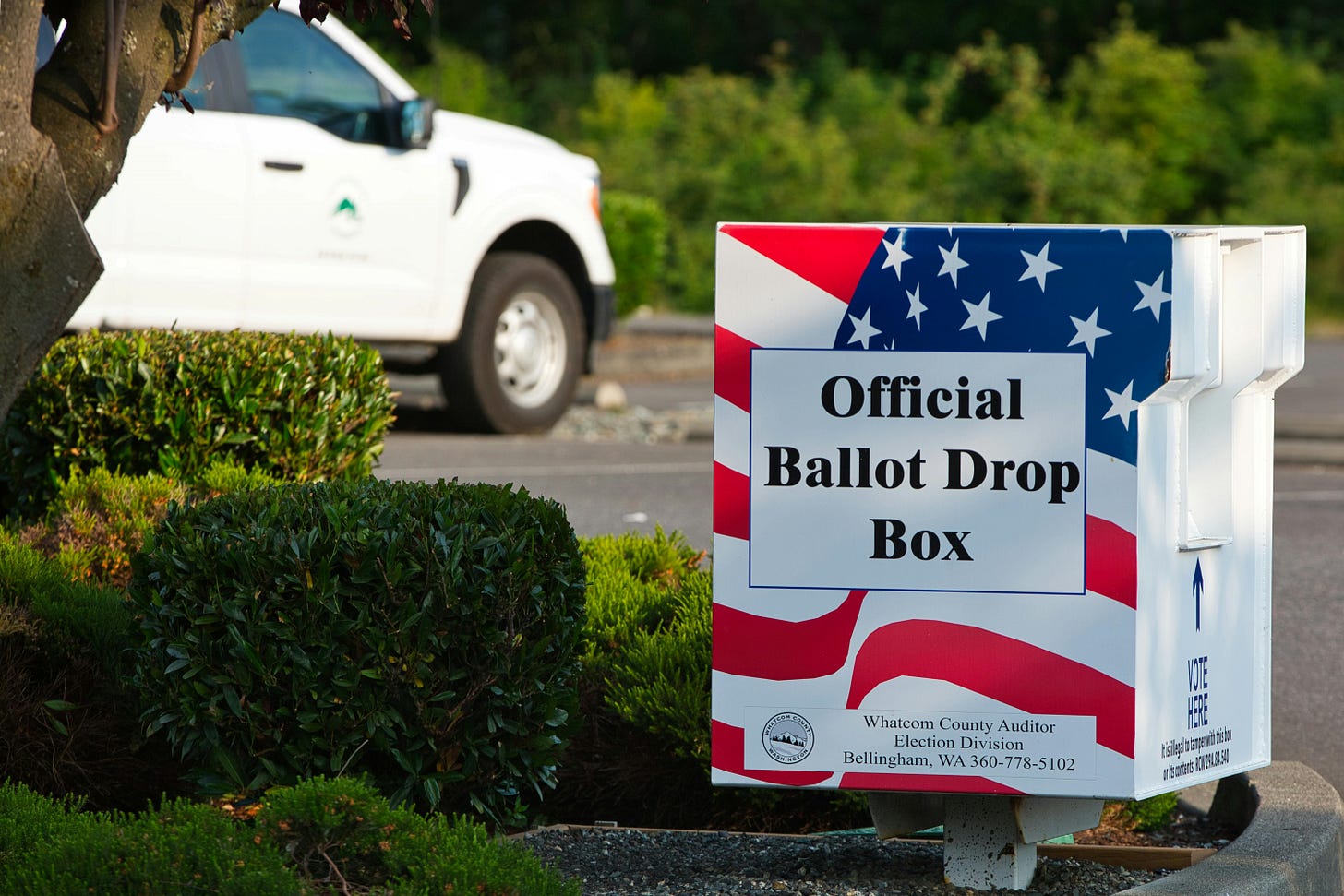
well written!
Scary. It's all so cut throat. I guess I shouldn't be hesitant to vote, though.